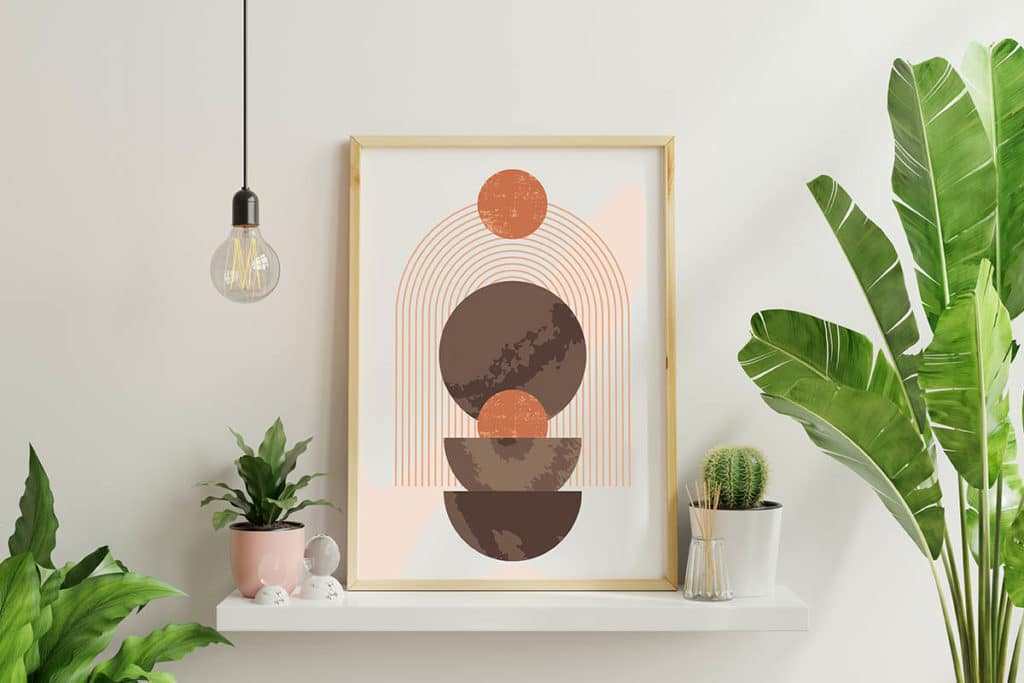There are many inventive ways for designers to earn extra income online these days. One way is selling printables on Etsy, a business that has risen in popularity in our new remote reality. Printables (or digital downloads) are items that you can download immediately after buying them online, and print at home, like a coloring sheet, art print, or stationary; or use online, like a worksheet, email template, or resume.
The great benefit to selling printables is that you can make as many as you want and never have to store or ship them. Digital downloads are an innovative, low-cost way to create an endless supply of ready-to-sell products, reduce overhead, and create a passive revenue stream. Selling printables also enables you to test out the market and discover best-seller products without sacrificing your budget.
Ultimately, selling printables on Etsy is the “set it and forget” approach to an online store. It’s great for experienced and novice designers, whether full-time or part-time. So, how do you start selling printables on Etsy? Follow this step-by-step guide to opening your own Etsy store and adding your digital listings.
How to sell printables on Etsy
Etsy is a great place to start selling printables because it offers access to a large online community. Whether you’re a designer looking to turn a hobby into a side gig or you’re running a graphic design business full-time, you’ll be able to build your audience without having to create a website or an independent online store. Etsy also has built-in advertising tools to help you easily and affordably promote your printables once your store is up and running. But before you can start selling, you’ll need to open up shop. So let’s start there.
Opening an Etsy shop
Setting up an Etsy store is fairly straightforward, however it is time-consuming. You’ll need to complete each step in order before moving forward, so make sure you’ve got your digital files ready to go, including images, titles, and prices. Then schedule an hour or two in your calendar to get down to business.
- Create an account on Etsy — It’s as simple as your email and a password.
- Choose your shop preferences — Your shop language, country, currency, and selling status (part-time or full-time).
- Name your shop (up to 20 characters) — This will appear in your shop and next to your listings. You can change the name once after opening. Etsy suggests choosing a descriptive or abstract name, but you can also use your own name.
- Stock your shop — Once your digital downloads are ready, you’ll add each one as a listing. Etsy suggests starting with ten listings and continuing to add over time, as a way to increase your discoverability.
Adding a digital download on Etsy
Anything you sell, whether digital or physical, is called a listing on Etsy. Listing a printable is the same process as creating a listing for a physical product, only instead of stocking and shipping a physical item, you upload a downloadable digital file. Bear in mind that Etsy is different from other online marketplaces, in that when it comes to printables, you can only sell items that are handcrafted or designed by you.
- Add plenty of images of your printable — You can add up to 10 high-resolution photos including a primary shot, different angles, closeups, a size comparison, and how it would look in use. The first photo you use will become your listing’s thumbnail.
- Upload an explanation video — This is a great way to show customers how to print and use your digital download – this is very popular with buyers!
- Describe your listing — This part may take a bit of time, but it’s essential for telling the story behind your printable. The content here will help your item be found in Etsy’s search. This section includes:
- Printable title
- Who made it
- What is it
- When you made it
- Category (example Digital Print or Calendars & Planners)
- Renewal options: Automatic (recommended) or manual listing renewal
- Type: Digital—this will allow buyers to download and print your file
- A brief description (the first few lines are the most important, so make them eye-catching)
- Tags and materials (up to 13)
- Set your price — Factor in the cost of materials, design programs, and labor. The price you choose will appear in your preferred currency.
- Add your quantity — Since you’re selling a digital download, set your listing to “Automatic renewal” to avoid a status of ‘sold out’.
- Upload your digital file — You can add up to five files (20MB each) that buyers will download as soon as they complete their purchase.
Once you’ve finished adding all your digital listings, you’ll need to set up shipping (even though you won’t need it), payment, billing info, and shop security.
Marketing your Etsy store
To drive traffic to your new listings, you can use Etsy Ads to create your campaign and promote your printables to the Etsy community. You decide on your daily budget, with a maximum daily budget of $25.00 for all sellers. That’s because Etsy reviews your ad performance to help you optimize your budget and reach the right audience. When it comes to paying for advertising, you only pay when someone clicks on your ad, and you can view your ad performance over time, helping you evaluate it and decide when to modify it. You’ll want to keep an eye on which printables are more successful than others and start planning new products based on your ad results. For example, if you’ve designed a daily planner that people keep buying, try offering it in a few different colors or patterns.
Bottom line: Your store doing well benefits the wider Etsy community, so Etsy offers a number of free resources to help you succeed, like Etsy U and the Seller Handbook.
24 tools to help you create printables
Now that you know how to start selling printables on Etsy, you might be wondering how to create them. Here are some helpful resources to help you make your digital products and prints.
To create your printable designs…
- Canva — Drag and drop platform to design custom social media graphics, presentations, posters, documents, stickers, and invites.
- Acrobat Pro — The complete PDF solution for working anywhere.
- Photoshop — Create graphics, photos, and art on desktop and iPad.
- Illustrator — Create detailed designs, illustrations, and vector graphics.
- Creative Cloud — Use all 20+ Adobe apps, including Photoshop, Illustrator, InDesign, Premiere Pro, and Acrobat Pro online.
- Procreate — Sketch and Paint digital art on your iPad with this graphics editor app.
- Pixeden — Customize web and graphic design templates, including logo sets, business cards, resumes, and brochure templates.
- Piktochart — Create infographics, posters, and presentations.
- Stencil — Design graphics and edit images faster.
For using fonts and font combinations…
- DaFont — Download free, high-quality fonts in all styles, from serif and script to calligraphy.
- Typewolf — See what fonts are trending and which font combinations work well together.
- Lost Type — Pay-what-you-want font library with unique typefaces from all over the world.
For finding royalty-free images…
- Unsplash — A library of free high-resolution photos from contributors worldwide.
- Pexels — Free stock photos that are high-quality, royalty-free, and copyright-free.
- Burst — Free stock, high-resolution stock photos for websites and commercial use (by Shopify)
For designing SVG illustrations and icons…
- DrawKit — Free SVG illustrations, packs, and icons you can use with no attribution required.
- Humaaans — A design library where you can mix and match human characteristics to create illustrations of people in InVision Studio and Sketch.
- InVision Studio — An in-browser vector editing and screen design tool.
- The Noun Project — A diverse collection of icons and stock photos you can download in SVG or PNG.
- Flaticon — A library of free icons and stickers made by designers, for designers.
For editing images for free…
- GIMP — Open-source raster graphics editor for image editing, drawing, and transcoding.
- PixIr — Image editing tools for both novice and professional designers.
For designing worksheets and templates…
- InDesign — Design page layouts for print and digital media.
- Sketch — Digital graphics design platform for macOS built for designers.
- Google Sheets — Create, edit and save spreadsheet files online.
- Google Doc — Write and format text-based digital documents and save them as PDFs.
There’s an endless list of online resources you can use to hit the ground running and experiment. Since Etsy shops with more products are easier to find, there’s no reason to limit yourself. So have fun with it and see what happens.
Managing your Etsy store like a pro
Once your Etsy store is ready, you’ll want to promote it on your social media, and start building your true fans (people who spend $100 a year on your products). Before you know it, your printables will be selling on Etsy like hotcakes 🔥. Go ahead, dream big!
If you haven’t done so already, you should consider opening a business banking account to properly manage your business finances. This will make it easier to track your expenses and prepare for tax season ahead of time. Once your shop is up and running, combined with the rest of your design revenue streams, you’ll be on your way to building financial stability as a designer. But let’s not get too ahead of ourselves. For now, start with designing your first ten digital downloads and let the chips fall where they may.




